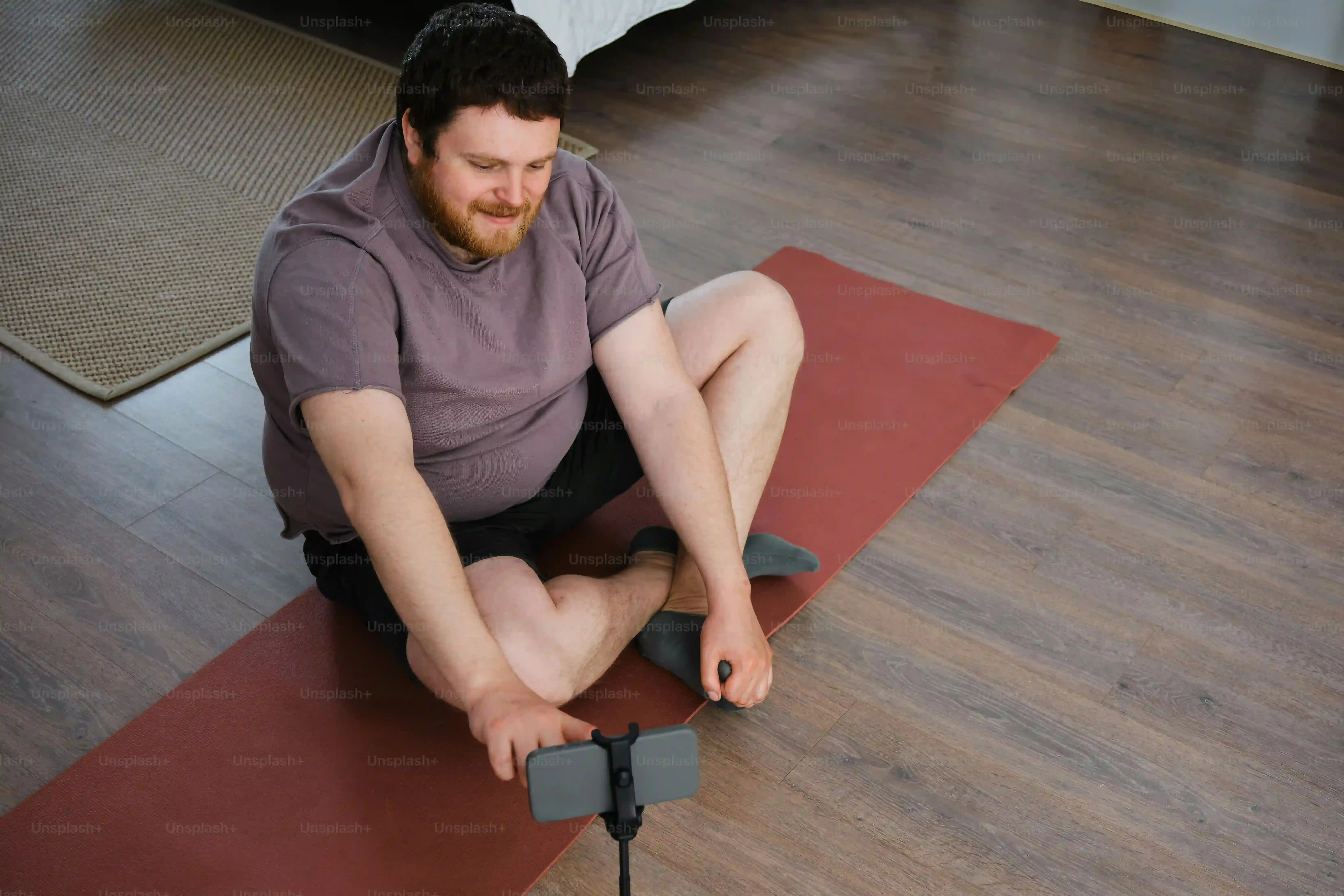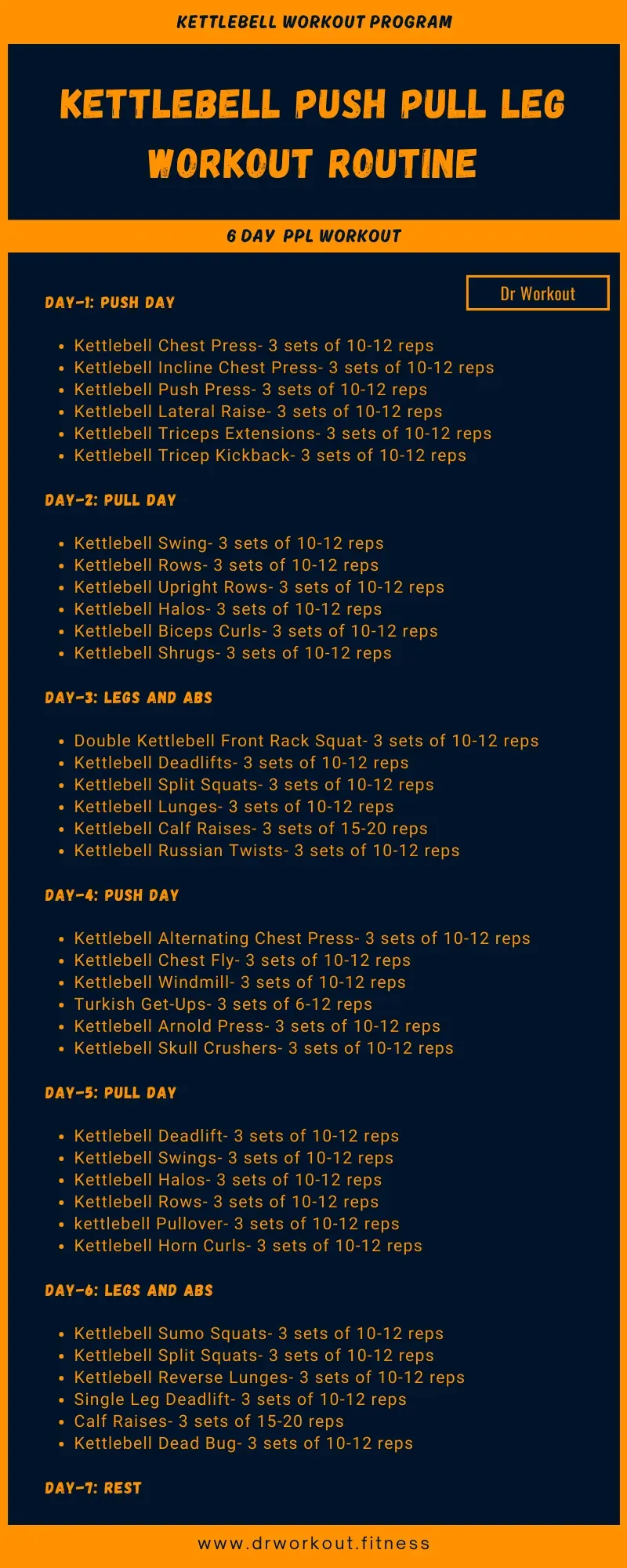Table of Contents
Tired of bouncing between random workouts, hoping something sticks? Maybe you've hit a plateau with your current routine, or perhaps you're just looking for a structured way to build serious strength and muscle with those iron cannonballs. If you're wielding kettlebells and wondering how to organize your training for maximum effect, you're probably considering different splits. One approach gaining traction is the push pull legs split, and applying it to kettlebell training offers a focused path.
Getting Started with a Push Pull Legs Kettlebell Program

Getting Started with a Push Pull Legs Kettlebell Program
Why Bother with This Split Anyway?
Alright, so you've got your kettlebells, maybe they're gathering a little dust in the corner, or maybe you're already swinging them around but feel like you're just winging it. The idea of aGetting Started with a Push Pull Legs Kettlebell Programpops up. Why commit to this specific structure? Think of it like building a house. You wouldn't just start nailing boards together randomly, would you? A PPL split gives you a blueprint. You dedicate specific days to pushing movements (like presses and push-ups), pulling movements (like rows and cleans), and legs (squats, lunges, swings, you get the picture).
This systematic approach means you hit every major muscle group effectively throughout the week. You're not overworking one area while neglecting another. It also bakes in recovery – your push muscles rest while you train legs, your pull muscles rest while you do push, and so on. This targeted focus allows for higher volume on specific muscle groups compared to a full-body routine done too frequently, potentially leading to better gains over time. It's less chaotic, more intentional training.What You Need Before You Swing
Before you jump headfirst into a fullGetting Started with a Push Pull Legs Kettlebell Program, let's be real for a second. Do you know how to swing a kettlebell properly without looking like you're trying to fight it? Can you clean one without banging your wrist black and blue? Basic kettlebell competency is non-negotiable. Trying advanced splits without understanding the fundamental movements is like trying to drive a stick shift before you know how to turn the car on. Get comfortable with the hinge, the swing, the clean, the press, and the squat first.
You also need at least one kettlebell. Shocking, I know. The weight you choose matters. Don't go heroic and grab something too heavy; you'll sacrifice form and invite injury. Start lighter than you think you need for complex movements like cleans and presses, and maybe a bit heavier for swings and squats. You can always go up. Trying to force reps with poor form using an oversized bell achieves nothing but frustration and potential trips to the chiropractor. Be honest about your current strength level.
- Ensure you have basic kettlebell form down.
- Select appropriate kettlebell weights (plural is better, but start with one if needed).
- Understand the difference between push, pull, and leg movements.
- Commit to consistency – this isn't a magic bullet, it requires showing up.
Why a Push Pull Legs Split Works for Kettlebells

Why a Push Pull Legs Split Works for Kettlebells
Why This Split and Kettlebells Are a Good Pairing
So, why exactly does aWhy a Push Pull Legs Split Works for Kettlebellsmake sense? Kettlebells aren't like dumbbells or barbells where isolating a single muscle group is super straightforward. They move in arcs, recruit stabilizing muscles like crazy, and often involve dynamic, full-body movements. A PPL split respects this. Instead of trying to force single-joint isolation exercises (which kettlebells aren't great for anyway), it groups movements by general function – pushing away from you, pulling towards you, and using your lower body. This aligns perfectly with the compound, integrated nature of most effective kettlebell exercises. You're not trying to make a kettlebell act like a machine; you're using the split to structure your training around what kettlebells do best.
Crafting Your Push Pull Legs Kettlebell Program: Exercises & Structure

Crafting Your Push Pull Legs Kettlebell Program: Exercises & Structure
Picking Your Push, Pull, and Leg Kettlebell Moves
so you're sold on the idea of apush pull legs kettlebell program. Now comes the fun part – figuring out what exercises actually go into it. This isn't rocket science, but it does require some thought. You need to select moves that fit the push, pull, and leg categories while leveraging the unique benefits of kettlebells. For push day, think presses – overhead presses, floor presses – and maybe some push-up variations where the kettlebell adds resistance or elevates your hands for a deeper stretch. Pull day is where you hit rows – single-arm rows, bent-over rows – and swings, which are arguably the king of kettlebell exercises and work the posterior chain like nothing else, fitting nicely into a pull/hinge category. Leg day is classic lower body: kettlebell squats (goblet, front rack), lunges, and yes, more swings for that powerful hip drive.
Maximizing Results with Your Push Pull Legs Kettlebell Program

Maximizing Results with Your Push Pull Legs Kettlebell Program
Consistency Trumps Heroics Every Single Time
Look, you've got the blueprint for yourpush pull legs kettlebell programnow. That's step one. Step two, the one most people trip over, is actually doing it. Consistently. Showing up three days a week, week after week, is infinitely more effective than crushing one monster session and then disappearing for two weeks because you're crippled. Your muscles don't grow from one brutal beatdown; they grow from consistent stimulus and recovery. Think of it like chipping away at a block of marble – slow, steady progress builds the masterpiece. Skipping workouts because you "don't feel like it" or life got a little hectic is the fastest way to ensure your results are mediocre at best. Schedule your workouts like important appointments. Then keep them.
Don't Be Afraid to Tweak and Progress
A static program is a stagnant program. Once you can comfortably hit all your reps and sets with good form, it's time to make things harder. This is called progressive overload, and it's non-negotiable for continued progress with yourpush pull legs kettlebell program. You can add weight (if you have heavier bells), add reps, add sets, decrease rest time, or even make the exercise itself harder (like moving from a floor press to a bench press, or a regular squat to a pistol squat progression). Kettlebells offer unique ways to progress too, like moving to double bells or working on more complex movements over time. Keep a log of your workouts so you know what you did last time and what you need to beat. Guessing won't cut it.
- Add weight when reps feel easy.
- Increase reps or sets before adding weight if needed.
- Shorten rest periods slightly.
- Try a more challenging variation of an exercise.
- Focus on explosive power on certain sets (e.g., faster swings).
Listen to Your Body, Not Just the Program
Yeah, consistency is key, but blindly following a program when your body is screaming "NO" is just dumb. There's a difference between feeling a bit tired and feeling sharp joint pain or deep muscle soreness that doesn't feel right. Pushing through actual pain is how you end up sidelined for weeks or months. Yourpush pull legs kettlebell programis a guide, not a dictator. If you had a terrible night's sleep or feel a cold coming on, it's okay to reduce the weight, do fewer sets, or even take an extra rest day. Recovery is when your body actually gets stronger, so don't shortchange it. Proper sleep, decent nutrition, and staying hydrated are just as crucial as the swings and presses themselves.
Making the Push Pull Legs Kettlebell Program Work for You
Adopting a push pull legs kettlebell program provides a clear framework for consistent training. It removes the guesswork, ensuring you hit major muscle groups with purpose and allow for necessary rest. While the principles are straightforward – dedicating days to pushing, pulling, and lower body movements – the real work lies in selecting the right kettlebell exercises and managing your volume and intensity. It's not a magic bullet, but a structured approach that, when applied diligently, can lead to tangible progress in strength and muscle development with your kettlebells.